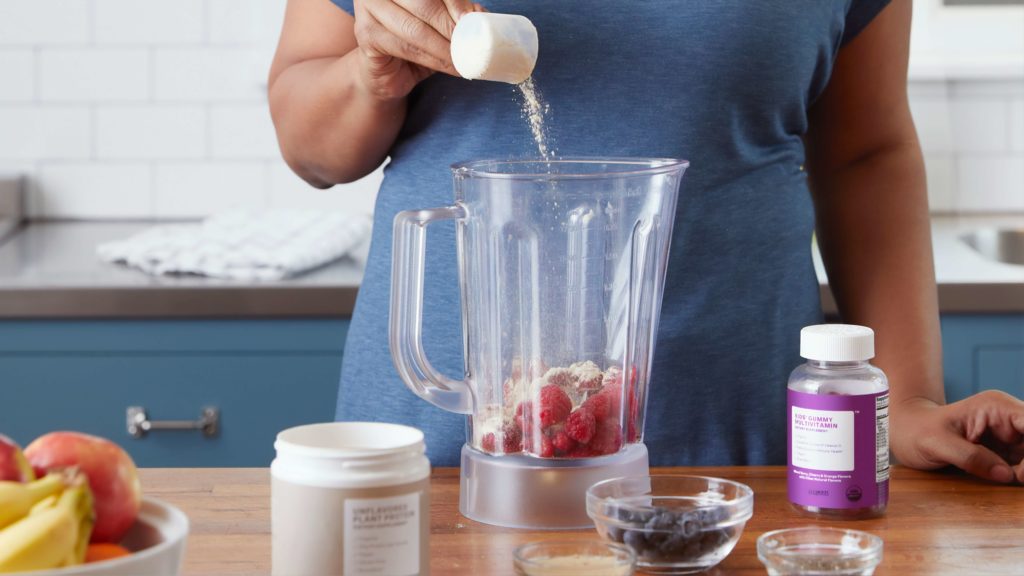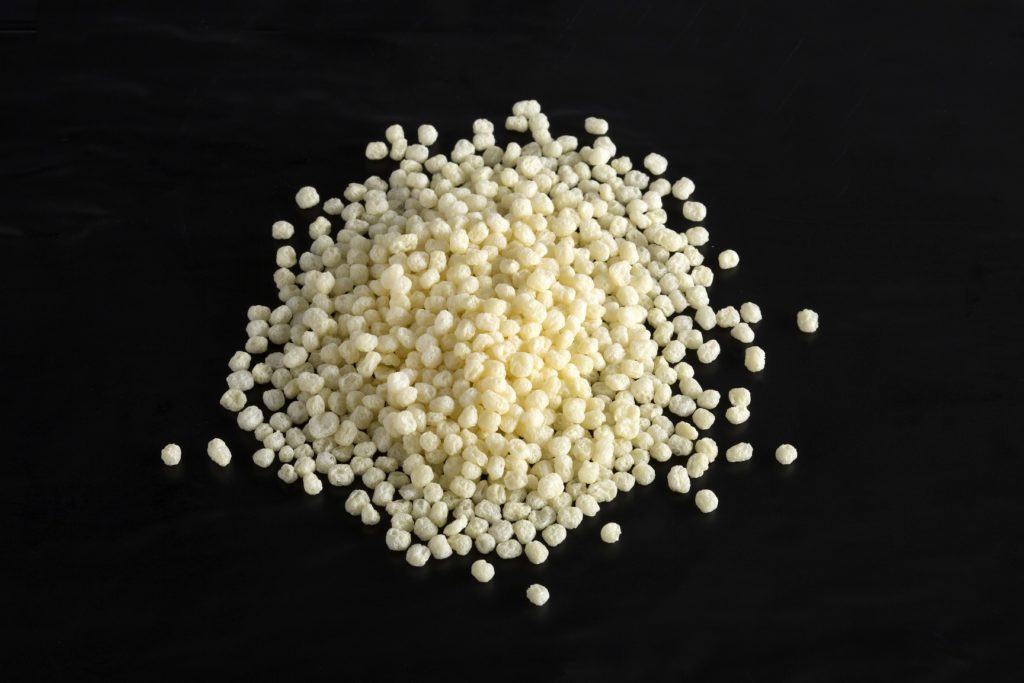Dairy protein no longer serves the sports nutrition market exclusively, but is branching out to answer the nutritional needs of mainstream consumers. In recent years, industry has seen an explosion in growth in the protein bar category, which has expanded to comprise new texture and flavor-enhancing dairy protein formulas among other added functional ingredients. FoodIngredientsFirst speaks to leading dairy sector players to further identify how they are juggling consumer demands for nutrient-rich proteins that deliver on convenience, functionality and craveability.
“Consumers are looking for convenience and also want to go back to nature for “quality” products. There is a lot of information that consumers are getting from media and social media channels which is causing confusion. Consumers want a product that they can trust and that offers strong and scientifically proven benefits,” explains Victoire Visseaux, B2B Sales & Marketing Manager at Lactalis Ingredients.
Protein is in high demand among busy consumers looking to satiate cravings with convenient snacks. “Bar launches in 2019 have reached an all-time high in the UK. There has been a real shift from the traditional high protein sports nutrition-style bars used by core athletes, to bars that encompass added functional ingredients, such as protein and fiber, which are used by mainstream consumers as part of a healthier on-the-go lifestyle,” says Paul O’Mahony, Product Strategic Manager Dairy and Plant Proteins at Glanbia Nutritionals.
Crunchie Milk Protein Crisps by Glanbia Nutritionals.As reducing bar hardening is a significant issue, Glanbia Nutritionals’ focus is leveraging this as a point of differentiation for manufacturers. The company specializes in dairy protein solutions that reduce hardening while also improving product mouthfeel with new layers of flavor and texture. Its unique protein range of ingredients comprises BarPro (milk protein isolates that extend shelf life), BarFlex (minimizing bar hardening for a long-lasting chewy texture), and Crunchie Milk Protein Crisps (delivering texture with protein fortification).
“We work in partnership with manufacturers and brand owners across the industry to address some of the more complex challenges that companies face such as creating new innovative taste and textures with improved mouthfeel, in addition to using multilayers to create stand-out products in the market,” says O’Mahony.
Still, among the fastest growing categories for bars are those with a high protein claim. “More than 400 product launches featured this claim in the UK alone in the past five years. With availability more widespread than ever and popular manufacturers such as Mars and Cadbury appearing on the market with their own high-protein bars, consumers are seeking high quality, clean tasting, functional nutrition, all with a hint of indulgence,” adds O’Mahony.
Overcoming textural challenges in whey applications
While protein bars are a big growth area, the marketplace is increasingly crowded. Achieving premium positioning can be time-consuming and technically challenging for manufacturers, notes Joe Katterfield, Health and Performance Nutrition Development Manager at Arla Foods Ingredients.
“In the past, they would have to invest a lot of time and effort on sourcing, testing and blending various protein ingredients to create a premium bar,” he adds. “To address that, we recently launched a plug-and-play solution called Lacprodan ISO.WheyBar. It’s a blend of whey protein isolate and dairy proteins that’s been specifically designed as a premium protein source in bars. It’s ready-to-mix, so it can cut production time and delivers a high-quality product.”

Lacprodan ISO.WheyBar is designed to be 50 percent less bitter than similar whey protein hydrolysates on the market.In formulating Lacprodan ISO.WheyBar, Arla Foods Ingredients sought to overcome the challenges of working with whey protein isolate. While recognized as a premium protein source, the ingredient is known to harden during protein bars’ shelf-life. “That’s not the case with Lacprodan ISO.WheyBar, so manufacturers can easily add a high-quality protein source to their bars without compromising on texture,” says Katterfield.
Arla Foods Ingredients has also launched a new whey protein hydrolysate, Lacprodan HYDRO.PowerPro, which is ideal for powder shakes and ready-to-drink protein beverages. “Whey protein hydrolysates offer the same high-quality protein as whey but in a more easily absorbed form, delivering faster muscle recovery,” remarks Katterfield.
“The problem is that whey protein hydrolysates have traditionally been known for their bitter taste, which obviously influences consumer demand. Lacprodan HYDRO.PowerPro avoids that issue – studies have shown that it’s 50 percent less bitter than similar whey protein hydrolysates on the market. That means consumers can get all the benefits without the associated problems with taste,” he adds.
Laying off lactose and packing in nutrients
Consumers of protein supplements are increasingly focused on restricting lactose intake. Targeting this demand, Volac has developed Volactive Sugar Free Whey Protein Concentrate (WPC), which contains “at least eight times less lactose levels than standard whey protein concentrate.” For instance, the company details that a 24g serving of Volactive Sugar Free WPC, delivering 20g protein, would only contain 0.12g of lactose.
“In a study of lactose maldigesters, 0.4g of lactose did not produce a positive test result or gastrointestinal symptoms (Montalto et al., 2008). Therefore at such levels it is unlikely that consumers would have issues with Volactive Sugar Free WPC, which enables active consumers to incorporate whey with minimal amounts of lactose into their regimens,” says Elisa Glover, Nutrition Specialist at Volac.

Pronativ by Lactalis Ingredients is a cold-filtered native whey protein directly from farm fresh milk.Next to lactose reduction, nutrient-rich proteins are also featured strongly in NPD this year. In this sphere, Lactalis Ingredients specializes in a fast absorption protein coined Pronativ, a cold-filtered native whey protein directly from farm fresh milk. Native (low processed) whey is noted by the company as promoting better muscle training and recovery adaptions than standard whey protein in moderate supplementation.
“We take it a step further by reducing the processing steps in order to produce a more nutrient dense protein with a very unique amino acid profile, which better answers the body’s needs and is easier for the body to use. Pronativ is rich in minerals and antioxidants as the minor fractions of the protein like immunoglobulins and Lactoferrin are protected,” says Visseaux of Lactalis Ingredients.
Meanwhile, Fonterra is spotlighting one of its whey protein concentrates, WPC356, which not only contains 70 percent protein, but also fat and phospholipids. This allows the company to supply both quality protein and also functionality to broad applications.
“The good emulsification and aeration characteristics of this ingredient has shown us recently that it can be used to create good rise in breads and high overrun in for example ice cream. These types of functionality create the possibility to replace emulsifiers and hereby have a cleaner label on the final product,” says Laura Dijkstra – de Jong, Technical Innovation Manager Europe at Fonterra.
Plant-based protein
FoodIngredientsFirst inquired about the rise of plant-based proteins and the potential of this trend to offset growth in the dairy space. “The rise in demand for plant proteins is part of a wider consumer demand for protein generally. We believe there’s plenty of space in the market for both dairy and vegan options,” says Katterfield of Arla Foods Ingredients.
Demand for whey protein is set to remain strong because of the nutritional benefits it offers, which plant proteins do not, explains Katterfield. Arla Foods Ingredients has invested in research “Dairy proteins are still the most complete proteins,” notes Katterfield of Arla Foods Ingredients.studying the combination of dairy and plant-based ingredients, which he outlines as “an area with a lot of potential.” “Whey protein offers rapid absorption and a wider range of essential amino acids, and it scores far more highly on the Protein digestibility-corrected amino acid score (PDCAAS) and Digestible Indispensable Amino Acid Score (DIAAS) measures of protein quality.”
“Plant proteins have been notorious for their bad (off)-flavor. Over the years they have improved quite a lot, but the creamy, milky flavor of dairy proteins is still difficult to beat. Dairy proteins are the most complete proteins and provide the consumer with all the amino acids the body requires, therefore having the preference, specifically for consumers looking to maintain or build muscle mass,” notes Dijkstra – de Jong of Fonterra.
There has been less research around plant proteins for their ability to stimulate muscle protein synthesis, says Glover of Volac. “What we do know, and what research shows us, is that animal based proteins such as dairy are superior to plant proteins for increasing muscle protein synthesis (MPS). Dairy proteins are highly digestible and naturally abundant in the essential amino acids, making them high quality proteins.”
“Whey protein in particular is high in leucine – the key amino acid for triggering muscle protein synthesis. Plant sources of protein can be less digestible and limiting in some of the essential amino acids such as lysine and methionine, and therefore considered to be of lower quality. Until a plant based protein source is developed and found to be just as effective, dairy proteins will continue to be recommended as one of the best choices for optimising muscle anabolism,” she concludes.
Original article sourced from https://www.foodingredientsfirst.com/





